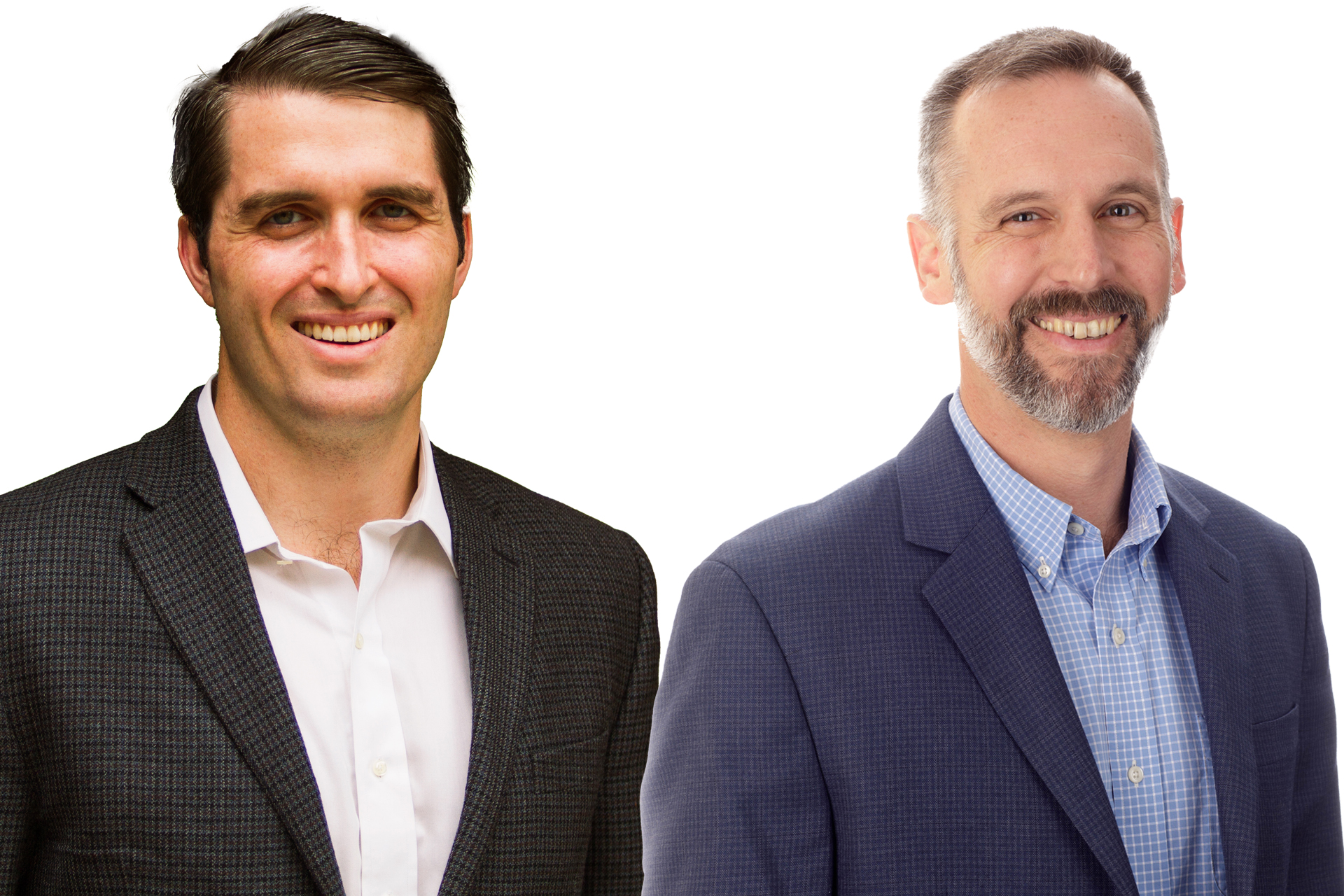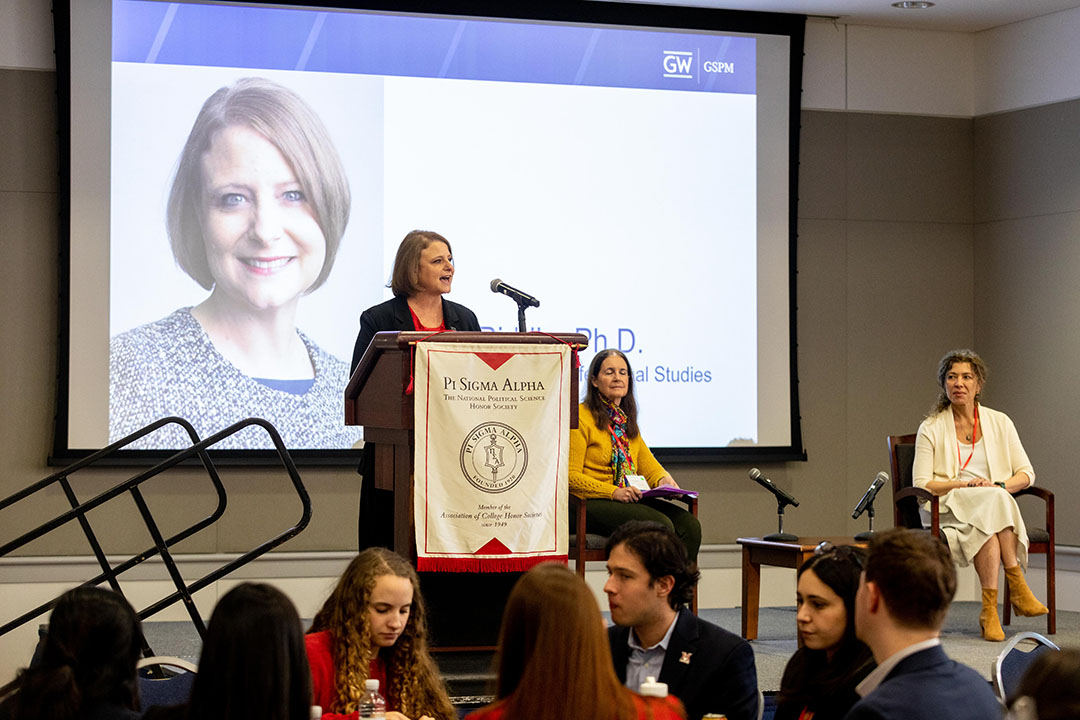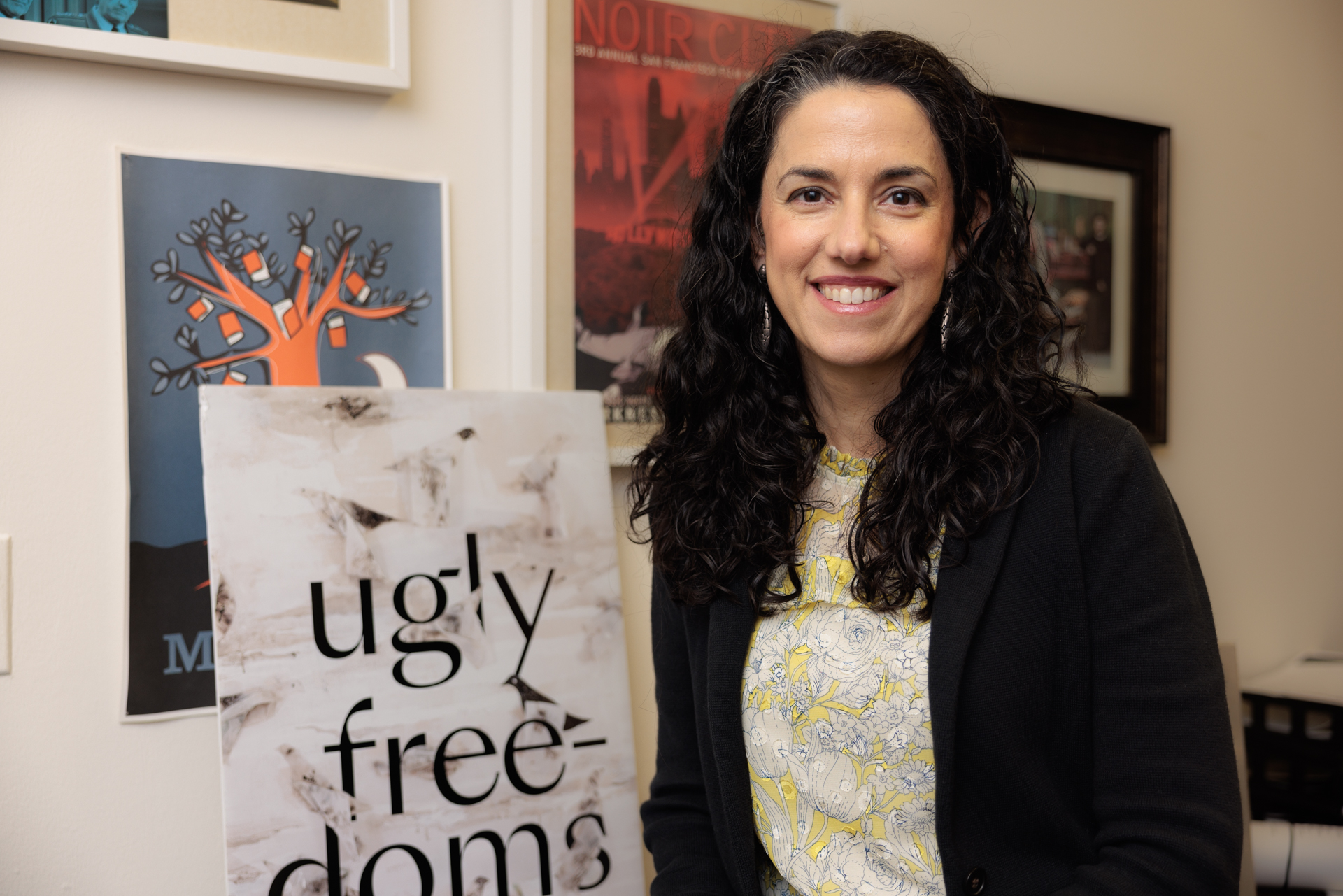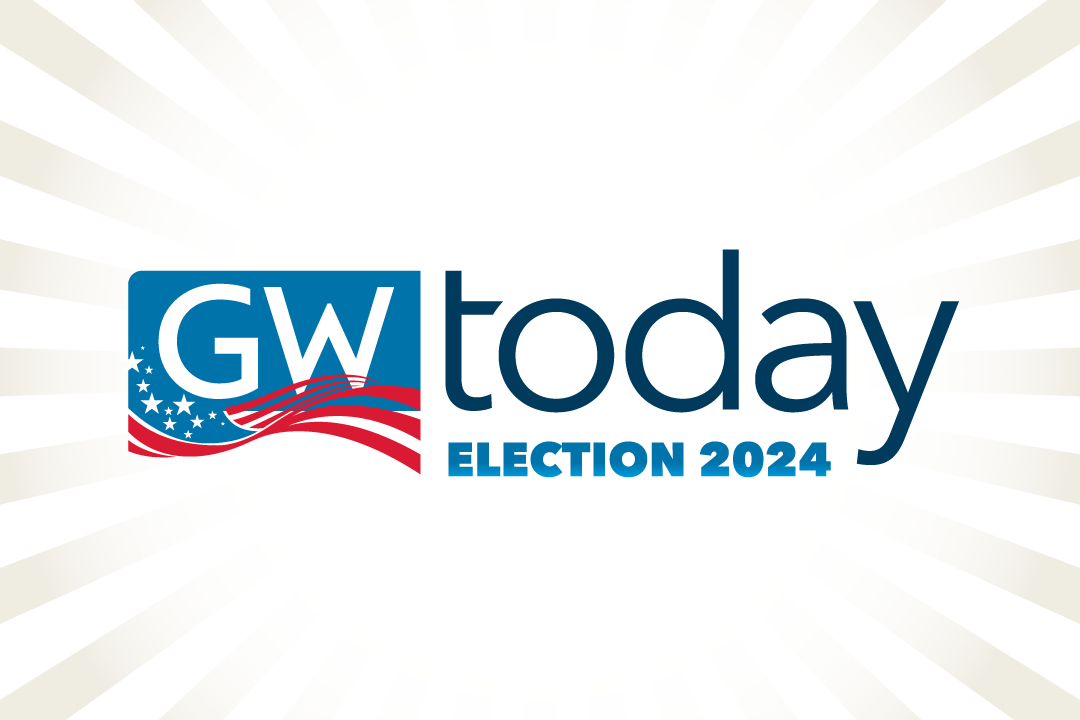The George Washington University students who enroll in the course Introduction to American Politics and Government often add richly to the class, say two of their professors. Part of that is because GW attracts politically savvy students drawn by its location in the nation’s capital and their desire to be close to the seat of federal government. But sometimes they come to class with particular knowledge gained from campaign work or internships on the Hill.
Danny Hayes, professor in the Columbian College of Arts and Sciences’ Department of Political Science, said he has students every semester who have experience working with political campaigns or on the Hill.
“When we get to the section on campaigns and elections, I get to learn things from them,” Hayes said. “And there are always students who are interning on the Hill. When I talk about what’s happening in, say, the fight over who’s going to be the House Speaker or why Republicans are backing away from an immigration bill, the students often have their own perspectives, because they’ve been listening to conversations among members and staffers on the Hill.”
Assistant Professor Michael Hankinson has also been impressed by the depth of knowledge students bring to class, saying they are sometimes more like graduate students at other schools. While it’s a pleasure to teach them, he said, he also enjoys having students less familiar with politics and government in the United States.
“When I think about GW students as being sharp about politics, I would say yes, it is very true,” Hankinson said. “But there’s a large swath of students that I think this class is actually more important for—students coming from a different background, or from a different country where they have limited understanding of how the American political system works.”
Though their syllabi may be distinguished by slight shifts in emphasis reflecting their respective research interests—Hayes may give special attention to the role of media, while Hankinson highlights housing policy—they have similar goals for their class.
“I want them to take away an understanding that there’s a logic to politics,” Hayes said. “American politics feels confusing a lot of times. But much of what feels confusing is a consequence of the incentives that political actors have to behave in particular ways, whether that’s members of Congress or the president, Supreme Court justices or voters themselves. And I think it’s empowering for students to come away from a class and feel like they have an understanding of why the system works the way that it does.”
The other thing he wants students to know, Hayes said, is that their participation in the political process matters.
“I think it’s easy to feel small in politics,” Hayes said. “I want to help students understand that change in American politics has come at times when there have been movements of individuals willing to sacrifice themselves and to engage in collective action. Some of what I’m trying to do in the class is to not only give students an understanding of how politics works, but help them understand what their role in politics can be.”
Borrowing an idea from a former colleague, Hayes promises students that if they run for office, he will donate to their campaign. He hasn’t yet had any takers, but he remains hopeful.
Belief in their own potential to affect the political system is something Hankinson wants students to take away from his classes, too. But mostly he wants them to learn how to make sense of government and politics.
“The most important thing for me is the ability to digest information about what is happening in government, what is happening in politics,” Hankinson said. “Everyone has that uncle at Thanksgiving dinner who says ‘Congress is broken, throw them all out!’ I want to help students better understand the politics around them and also have a somewhat productive conversation with that uncle.”
Pessimism is counterproductive
Even in its title, Introduction to American Politics and Government, the course suggests two modes of understanding. The structure of American government has remained stable, which nods toward history, while politics have changed rapidly, especially in recent decades.
“Government is the rules of the game,” Hankinson said. “Politics is how individual actors or interest groups use those rules and navigate them and have different incentives to behave in certain ways.”
Given the polarization and dysfunction so evident in contemporary American politics, pessimism—or even despair—might seem natural. Hankinson acknowledges that he is frustrated by the current political situation, but stops short at categorizing his attitudes as pessimistic.
“That’s a very disempowering mindset,” Hankinson said. “Whatever happens in the next election cycle, and in the election cycle after that, I’m going to be here through all of it. I see my role as giving students the context they need to go out and try to make things better, according to their own version of what that looks like.”
Fixing what ails American politics might be difficult, Hayes said. Still, correcting a problem requires a systematic understanding of why things are going wrong, which might spark some innovative thinking.
“These are the students who are going to be the leaders of our country,” Hayes said, “and I’m hopeful that they come away from this class with an understanding of our current system that gives them a foundation for figuring out ways to improve it.”
When he first taught a class like this nearly 20 years ago, Hayes said, there wasn’t as much emphasis on polarization between the two major parties. Today, the topic pervades class discussions of Congress and other subjects such as elections, civil liberties and abortion. Much of the increased polarization we see today can be traced to the modern civil rights movement and the 1960s, Hayes said.
“Democrats were mostly liberals, but they also had a significant contingent of Southern Democrats who were pretty conservative,” Hayes said. “Republicans were mostly conservative, but they had a pretty substantial contingent of liberal Republicans from the Northeast. And as the parties have essentially sorted themselves out ideologically over the course of the last 50 years, they have become more internally cohesive. We now have a very liberal party and a very conservative party whose members see eye to eye on most issues. But they’ve simultaneously grown farther apart from each other. The Democrats have moved to the left, and the Republicans, especially, have moved further to the right. That growing ideological divergence is a big part of why our politics feels so conflictual today.”
It's also the case, Hayes added, that in periods of greater wealth inequality, polarization increases.
Plurality voting vs. proportional voting
There is high demand for the Introduction to American Politics and Government course. The section taught by Hankinson, with 178 students, is the largest of three offered this semester. (The third is taught by Assistant Professor Andrew Ifedapo Thompson.) Hankinson praises his three teaching assistants who lead discussion sections. “They’re doing yeoman's work,” he said.
In a recent lecture focused on political parties, Hankinson discussed topics such as Duverger’s law, which states that in systems with plurality voting, as in the United States, third parties typically pull votes from the larger party they most closely resemble, with their least preferred outcome as the result. He asked the class, “Why do third-party candidates run?” Students suggested vanity, a demonstration of principle or a hope to establish viability as motivating factors. Hankinson agreed, noting that a third-party candidacy can be a means of leveraging the party closest to you to adopt your program or idea.
“It’s not impossible for third-party candidates to win,” Hankinson said. “They actually can win, but usually in down-ballot races” in which they can practice retail politics and introduce themselves to most, if not all voters.
Contrasting America’s system of plurality voting, in which one winner takes all, with proportional representation, Hankinson gave the example of Massachusetts, a blue state in which Republicans make up between 20% and 30% of the electorate, but aren’t normally represented in the legislature. Opposite examples can be found in red states, where Democratic voters go unrepresented. Proportional voting, Hankinson said, “allows for losers to get something in each election.” In such a system, he added, coalitions are needed for policy-making.
When a student asked which system is better, Hankinson suggested that the question would come up in discussion section.
Two first-year students, Jeremy Bach and Amanda Baker, said they find the class enjoyable and interesting. Despite features America’s founders could never have imagined, the system functions well, said Bach, a political communications major.
“I would just say that our democracy as set up originally by the Founding Fathers is indirectly running the way they wanted it to, but it has a lot of differences. And yet it still all works,” Bach said.
Baker, a political science major, commented on the polarized loop in which we seem trapped.
“One party views the other as an existential threat to America,” Baker said. “But really, it’s that thought process that is the existential threat.”





